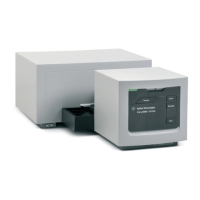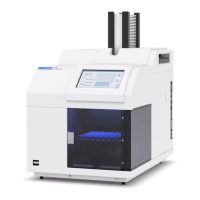Understanding Your Agilent ChemStation 239
Evaluating System Suitability
11
Noise Determination
Signal-to-noise calculation
For the signal-to-noise calculation, the ChemStation uses the six times the
standard deviation (sd) of the linear regression of the drift to calculate the
noise. The range closest to the peak is selected from the ranges as specified in
the system suitability settings. The signal-to-noise is calculated using the
formula:
The signal-to-noise is calculated for each peak in the signal. If the ChemStation
cannot find a noise value, the signal-to-noise is reported as “-”.
Drift and Wander
Drift is given as the slope of the linear regression, see Figure Noise as Six
Times the Standard Deviation, and wander is determined as the peak-to-peak
noise of the mid-data values in the ASTM noise cycles, see Noise Determined
by the ASTM Method.

